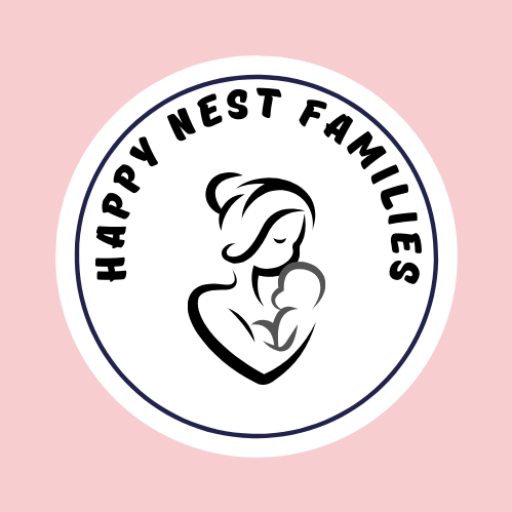Table of Contents
Newborn Breastfeeding Tips: For successful newborn breastfeeding, ensure proper latch-on technique and feed on demand. Stay hydrated and maintain a comfortable feeding position.
Breastfeeding a newborn can be a rewarding yet challenging journey for new mothers. Achieving a good latch is crucial for effective feeding and to prevent sore nipples. Observing your baby’s hunger cues and offering the breast promptly is key to establishing a healthy feeding routine.
It’s important to stay comfortable during feedings, which may involve using pillows for support. Keeping yourself well-hydrated and nourished is also essential to maintain milk supply. Remember, every mother-baby pair is unique, so be patient and don’t hesitate to seek support from lactation consultants or breastfeeding support groups if you encounter difficulties. With these tips, new parents can feel more confident as they navigate the early stages of bread newborn breastfeeding.
Importance Of Breastfeeding For Newborns
Newborn breastfeeding is key to good health. It’s more than just food. It’s their first vaccine, full of nutrients and antibodies. It helps babies grow strong and healthy. For moms, it builds a unique bond. This guide dives into why it’s so important and how it benefits both mom and baby.
Benefits Of Breastfeeding For Newborns
Newborn breastfeeding is packed with benefits. It’s not just about food; it’s about protection, growth, and health. Here’s why it’s so good:
- Full of nutrients: Breast milk has everything babies need to grow.
- Protects from sickness: It has antibodies that help fight off viruses and bacteria.
- Reduces SIDS risk: Sudden Infant Death Syndrome risks go down with breastfeeding.
- Good for the belly: It’s easier to digest than formula.
- Boosts IQ: Studies show breastfed babies may have higher intelligence later on.
| Aspect | Benefit |
|---|---|
| Health | Less diarrhea, respiratory illnesses |
| Growth | Healthy weight gain, development |
| Emotional | Stronger mother-baby bond |
How Breastfeeding Affects The Mother And Baby
Newborn breastfeeding creates a special connection between mom and baby. It’s not just about the physical benefits. It’s about feeling close and bonded. Here’s how it helps both:
- For moms: It helps lose pregnancy weight. It lowers the risk of breast cancer, ovarian cancer, and osteoporosis. It saves money and time, as no formula is needed.
- For babies: It’s the perfect first food. It helps them feel secure and loved. It makes their bodies strong against sickness.
Newborn breastfeeding tips also help both feel calm and connected. It releases hormones like oxytocin, known as the love hormone. This makes both mom and baby feel happy and relaxed. It’s a win-win for health and heart.
Preparing For Breastfeeding
Welcome to the essential guide on newborn breastfeeding tips, focusing on how to get ready for this beautiful journey. Newborn breastfeeding is not just about nourishment; it’s about comfort, bonding, and love. Preparing for breastfeeding before the baby arrives can make the process smoother for both mother and child. Let’s dive into some key areas to focus on.
Finding A Comfortable Position
Finding the right breastfeeding position is crucial for both mother and baby. It helps prevent soreness and ensures your newborn latches on correctly. Here are some popular breastfeeding positions:
- Cradle hold: Classic and comfortable, with baby’s head in the crook of your arm.
- Cross-cradle hold: Similar to the cradle but with the opposite arm supporting the baby.
- Football hold: Baby tucked under your arm, great for C-section moms.
- Side-lying position: Relaxing for nighttime feeds, lying on your side facing your baby.
Experiment with different breastfeeding positions to find what works best. Remember, a good latch is when a baby’s mouth covers both the nipple and part of the areola. Here’s a quick checklist for a comfortable newborn breastfeeding session:
| Checklist Item | Details |
|---|---|
| Support | Use pillows to support arms, back, and baby’s weight. |
| Relaxation | Take deep breaths and settle into a comfy chair or bed. |
| Positioning | Ensure baby’s head and body are aligned straight. |
| Latching | Wait for a wide-open mouth before guiding baby to the breast. |
Creating A Supportive Environment
A supportive environment enhances the newborn breastfeeding experience. It’s about having a calm, peaceful space that encourages bonding. Here are elements to consider:
- Comfort: Choose a cozy spot with a supportive chair and soft lighting.
- Privacy: Have an area where you can nurse without interruptions.
- Supplies: Keep essentials like water, snacks, and burp cloths within reach.
- Distractions: Minimize noise and have soothing music or a book to enjoy.
Creating a checklist for your breastfeeding station can be helpful:
| Item | Importance |
|---|---|
| Nursing pillow | Essential for support and positioning |
| Hydration | Water bottle to stay hydrated |
| Nutrition | Easy-to-eat snacks to maintain energy |
| Entertainment | Books or music for relaxation |
How Do I Prepare My Newborn For Breastfeeding?
Preparing your newborn for breastfeeding starts with simple steps. These tips can help:
- Skin-to-skin: Hold your baby against your skin right after birth to encourage instinctive breastfeeding behaviors.
- Early initiation: Aim to breastfeed within the first hour of birth to take advantage of your newborn’s reflexes.
- Feeding cues: Learn to recognize signs that your baby is hungry, such as mouthing or rooting, and offer the breast promptly.
- Consistency: Establish a regular feeding schedule to help regulate milk supply and baby’s appetite.
Remember, breastfeeding is a skill that both you and your baby will learn together. Be patient and seek support from lactation consultants if needed. A well-prepared start can lead to a successful newborn breastfeeding journey.

Breastfeeding Techniques
Welcoming a newborn brings joy along with a new set of challenges, one of which is breastfeeding. New moms often seek advice on how to feed their babies effectively. Breastfeeding techniques play a critical role in ensuring your baby gets the nutrition they need. These techniques can make the process comfortable for both mother and child. Let’s explore some tips to help make breastfeeding a smooth experience.
Latching Techniques
Proper latching is vital for successful breastfeeding. A good latch means your baby can feed well and you can avoid discomfort. Here are some key latching techniques:
- Turn your baby’s body towards you, so they are comfortable and don’t have to turn their head to latch.
- Support your breast with one hand, and use the other to guide your baby’s mouth to your nipple.
- Brush your baby’s lips with your nipple to encourage them to open their mouth wide.
- Ensure your baby’s mouth covers more of the areola below the nipple than above.
- Look for a rhythmic sucking and swallowing pattern to ensure your baby is latching correctly.
Discover essential newborn breastfeeding tips to ensure your baby latches properly and feeds comfortably.
Feeding Frequency And Duration
Feeding your newborn can be unpredictable. Here’s a guide to help you understand the typical feeding frequency and duration:
These newborn breastfeeding tips help new mothers establish a healthy feeding routine for their baby.
- Newborns need to feed 8-12 times a day. This means a feeding every 2-3 hours.
- Feedings can take 20-45 minutes, but this varies for each baby.
- Watch for your baby’s hunger cues, such as rooting or sucking on their hands.
- Allow your baby to feed until they release the nipple naturally, indicating they’re full.
Keeping track of feeding times and the duration can help you establish a routine and ensure your baby is eating enough.
How Can I Get My Newborn To Breastfeed Faster?
Getting your newborn to breastfeed faster involves understanding their needs and responses. Here are some tips:
- Start newborn breastfeeding as soon as possible after birth. Early initiation can help your baby learn quickly.
- Encourage skin-to-skin contact to help your baby latch on instinctively.
- Feed on demand to catch the times when your baby is most willing to breastfeed.
- Keep your baby awake and alert during feedings by gently stroking their back or feet.
- Express a little milk onto your nipple to give your baby a taste and encourage them to latch.
With patience and practice, breastfeeding sessions can become more efficient and enjoyable for both you and your baby.

Addressing Common Newborn Breastfeeding Challenges
Newborn breastfeeding brings joy and a unique bond between mother and baby. Yet, it also brings its share of challenges. These hurdles can make feeding times stressful. But don’t worry! We’ll tackle some common issues head-on, so you and your little one can enjoy a smoother newborn breastfeeding journey.
Engorgement And Blocked Milk Ducts
Many new moms face the discomfort of engorgement and blocked milk ducts. Engorgement happens when breasts swell with milk, blood, and other fluids. It can make breastfeeding tough for your baby. Blocked milk ducts occur when milk doesn’t flow well. This can cause a painful lump in your breast. Here’s what you can do:
- Feed often to keep your breast milk supply moving.
- Start feeds with the sore breast first.
- Use warm compresses before feeding to help milk flow.
- Massage your breast gently during feeds.
- Try different positions to find what works best for you and baby.
| Issue | What to Do |
|---|---|
| Engorgement | Warm compress, frequent feeds, massage |
| Blocked Ducts | Massage, change positions, ensure proper latch |
Learn newborn breastfeeding tips that ease common feeding challenges and promote better milk flow.
Sore Nipples And Breast Infections
Dealing with sore nipples can be tough. This often happens due to a poor latch or not switching positions. Breast infections, like mastitis, can also occur. These need a doctor’s care. Here are some tips to help prevent and treat sore nipples and infections:
- Ensure your baby latches on well.
- Switch newborn breastfeeding positions to avoid pressure on the same spots.
- Keep nipples dry and use a safe cream if needed.
- Wear loose clothing and a supportive bra.
- Rest and drink plenty of fluids.
If you notice redness, pain, or fever, contact your healthcare provider. They can check for infections and give you the right treatment. Remember, with the right help, you can overcome these challenges and keep up a healthy breast milk supply for your baby.
Breastfeeding And Nutrition
Breastfeeding is a special journey for you and your baby. It’s also a time when nutrition plays a key role. A well-balanced diet aids in milk production and supports your baby’s health. Let’s explore how to keep you and your baby thriving with the right nutritional choices.
How To Maintain A Healthy Diet While Breastfeeding
A healthy diet is crucial for cess. It helps your body produce quality milk and supports your energy levels. Focus on these tips:
- Eat a variety of foods to get all the necessary nutrients. Include fruits, vegetables, whole grains, protein, and dairy.
- Stay hydrated by drinking plenty of water. Milk production can deplete your fluids.
- Balance your meals with a mix of carbs, proteins, and fats. This balance helps sustain your energy.
Consider this table as a guide for daily intake:
| Food Group | Servings |
|---|---|
| Fruits | 2-4 |
| Vegetables | 3-5 |
| Whole grains | 6-8 |
| Protein | 2-3 |
| Dairy | 3 |
Remember, small, frequent meals can keep your energy up without feeling too full.
Nutritional Needs For Nursing Mothers
Nursing mothers have unique nutritional needs. Your body requires extra calories to produce milk. Aim for an additional 500 calories daily. Essential nutrients include:
- Calcium – Supports bone health for both you and your baby.
- Iron – Prevents anemia and keeps your energy levels up.
- Vitamin C – Aids in the absorption of iron and repairs tissues.
Here’s a simple meal plan example:
- Breakfast: Oatmeal with berries and nuts, plus a glass of milk.
- Lunch: Grilled chicken salad with a variety of veggies and cheese.
- Snack: Yogurt with honey and a banana.
- Dinner: Salmon, quinoa, and steamed broccoli.
Snacks like nuts and fruit are also great for quick energy boosts. Always listen to your body and eat when you’re hungry.
Is A 10 Minute Feed Long Enough For A Newborn?
Many new parents ask if a 10-minute feed is enough for their newborn. The answer is it depends. Newborns typically feed 8-12 times a day. Each feeding can last from 10 to 45 minutes. Look for signs of newborn weight gain and contentment as indicators of sufficient feeding. Here’s what to watch for:
- Steady weight gain – Your baby should steadily gain weight after the first week.
- Wet diapers – Expect 5-6 wet diapers a day as a sign of adequate milk intake.
- Feeding cues – Your baby should seem relaxed and satisfied after feeding.
Remember, every baby is different. Some may need longer feeding times, while others are efficient and feed quickly. Pay attention to your baby’s needs and consult your pediatrician if you have concerns about feeding duration or weight gain.

Breastfeeding In Public
Newborn breastfeeding is a journey filled with unique challenges and joys. Among these challenges is the need to feed your little one while out and about. Newborn Breastfeeding in public can seem daunting at first. Yet, with the right approach, it can become a comfortable experience for both mother and baby. Understanding how to manage public feedings ensures that your baby’s needs are met, no matter where you are.
Tips For Comfortable And Discreet Breastfeeding In Public
Navigating the waters of public breastfeeding can be much smoother with a few clever strategies. To ensure a comfortable and discreet experience, consider the following tips:
- Choose the right attire. Wear clothes that offer easy access to your breasts, such as those with front openings or nursing flaps.
- Use a cover-up. If it makes you feel more comfortable, use a light blanket or a specially designed nursing cover.
- Scout for quiet spots. Look for seating in less crowded areas to reduce distractions for your baby and maintain privacy.
- Practice at home. Get comfortable with latching and positioning before you head out, so you can do it smoothly when the time comes.
- Keep essentials handy. Pack a diaper bag with items like nursing pads and a spare top for you in case of leaks or spills.
In a table format, here’s a quick guide to items that can help:
| Item | Use |
|---|---|
| Nursing Tops | Easy breast access |
| Nursing Covers | Privacy while feeding |
| Nursing Pads | Prevent leaks |
| Extra Clothing | Change in case of spills |
Remember, feeling relaxed and confident makes newborn breastfeeding in public much easier. With these tips, you can enjoy the freedom of feeding your baby whenever, wherever.
Know Your Legal Rights
It’s crucial to know your legal rights when it comes to breastfeeding in public. This knowledge empowers you to feed your child with confidence. Here’s what you should know:
- Federal law protects breastfeeding mothers. You can breastfeed your baby at any federal property or building.
- State laws vary. Most states have laws that allow women to breastfeed in public and private locations.
- No one can force you to move or cover-up. As long as you are allowed to be in a location, you can breastfeed there too.
- Private businesses must comply. They cannot discriminate against breastfeeding mothers.
- Workplace accommodations. Employers must provide break time and a private space for breastfeeding employees.
For a clearer picture, refer to the table below showing legal protections by law type:
| Law Type | Protection Provided |
|---|---|
| Federal Law | Feeding on federal property |
| State Law | Public and Private spaces |
| Business Policy | Right to breastfeed without discrimination |
| Workplace Law | Break time and space for nursing mothers |
Armed with this knowledge, you can feed your baby with peace of mind, knowing that the law is on your side. Always remember that breastfeeding is a natural and legally supported act that ensures your baby’s well-being.
Breastfeeding And Working
For new moms, juggling work and breastfeeding can be a challenge. Mastering the balance between maintaining a career and providing the best nutrition for your newborn is key. This section offers practical tips for working mothers who wish to continue breastfeeding. Discover how to manage breastfeeding while working and learn about creating a supportive workplace environment.
How To Manage Newborn Breastfeeding While Working
Time management and planning are vital for successful breastfeeding while managing work duties. Here are some tips to keep in mind:
- Start early: Before returning to work, practice pumping and storing milk. This builds a supply and helps your baby get used to bottle feeding.
- Invest in a good breast pump: A high-quality, efficient pump saves time and supports milk production.
- Plan your schedule: Set specific times for pumping at work to maintain milk supply and reduce discomfort.
- Store milk safely: Know the guidelines for storing breast milk and have a clean, cool place to store it at work.
Communicate with your employer about your needs for a private space and breaks for pumping. Consider the following table for a quick guide on how to store breast milk:
| Location | Temperature | Duration |
|---|---|---|
| Room temperature | Up to 77°F (25°C) | Up to 4 hours |
| Refrigerator | 39°F (4°C) or colder | Up to 4 days |
| Freezer | 0°F (-18°C) or colder | Up to 6 months |
Creating A Supportive Workplace Environment
To foster a breastfeeding-friendly workplace, a collective effort is required. Here’s how employers and colleagues can help:
- Offer a private space: Provide a clean, secure area for mothers to pump without interruption.
- Allow flexible breaks: Work schedules should accommodate pumping times, without penalty.
- Provide storage solutions: Ensure access to a fridge or cooler for storing breast milk safely.
- Communicate openly: Encourage discussions around breastfeeding needs to promote understanding.
Creating a supportive workplace goes beyond infrastructure. It’s about building a culture of respect and support for breastfeeding mothers. Employers can lead by example, promoting policies that support breastfeeding and work-life balance. Colleagues can contribute by being considerate and accommodating the mother’s pumping schedule. Such a nurturing environment ensures mothers do not have to choose between their careers and breastfeeding, leading to happier employees and healthier babies.

Breastfeeding And Pumping
Newborns need to eat a lot to grow healthy and strong. Breastfeeding is a great way to feed your baby. Sometimes, moms also use a breast pump. This helps when moms can’t be with their babies or need to save milk for later. Let’s talk about how to pick a good pump, store milk, and how long to feed your baby each time.
How To Choose A Breast Pump
Choosing the right breast pump is important. Here are some tips:
- Think about how often you will use it. If you pump a lot, get a strong, electric pump.
- Look for pumps that are easy to clean. You’ll save time.
- Try a pump with different settings. This lets you choose what feels best.
Also, check if your insurance covers the pump. Some do! This can save you money.
| Type of Pump | Best For |
|---|---|
| Electric Pump | Daily Use |
| Manual Pump | Occasional Use |
| Battery-operated Pump | Travel |
Remember, a good pump makes things easier for you.
Tips For Pumping And Storing Breast Milk
Here’s how to pump and store milk safely:
- Wash your hands before you start.
- Use clean bottles or bags for storing milk.
- Label each bottle with the date. Use the oldest milk first.
Storing milk right keeps it safe for your baby. Here are some rules:
| Place | How Long |
|---|---|
| Room temperature | 4 hours max |
| Refrigerator | 4 days max |
| Freezer | 6 months max |
These tips make sure your milk stays good for your baby.
How Long Should A Breastfeeding Session Last For A Newborn?
Each baby is different, but here are some general tips:
- Feed your baby when they seem hungry. Look for signs like sucking on fingers.
- Each session can last from 15 to 45 minutes. Let your baby decide.
- Try to feed from both sides. Start with the last side you used.
Sometimes, babies eat quickly. Other times, they take longer. That’s okay. The important thing is that your baby eats enough.
Weaning From Breastfeeding
Embarking on the journey of breastfeeding is a unique experience for every mother and her newborn. A key phase in this journey is weaning, which is the transition from breastfeeding to other sources of nourishment. Weaning is a significant step for both mother and child, and it requires patience, understanding, and a gentle approach. This guide will provide practical tips to help you navigate this important stage in your child’s development.
When To Begin The Weaning Process
Deciding when to start weaning is a personal choice, but there are signals that indicate your child may be ready. Look for signs such as a decrease in breastfeeding sessions or increased interest in solid foods. Here are some key points to consider:
- Child’s Age: The American Academy of Pediatrics suggests starting at about six months old.
- Developmental Milestones: Observe if your baby can sit up, hold their head steady, and show curiosity in what you’re eating.
It’s crucial to remember that every baby is unique. Some might show readiness earlier or later than others. Consult with a pediatrician if you are unsure about the right time to begin. The table below highlights typical weaning age ranges:
| Age Range | Typical Weaning Signs |
|---|---|
| 4-6 months | Can hold head up, sits with support, shows interest in food |
| 6-9 months | Grabs objects, reaches for your food, can sit without support |
| 9-12 months | Can pick up small objects, mimics chewing motions, starts using pincer grasp |
Begin the process when both you and your baby feel ready. Trust your instincts and take it one step at a time.
Gradual Weaning Vs. Abrupt Weaning
Weaning can be either gradual or abrupt, and the approach you choose can affect both you and your baby. Here’s a quick breakdown of each method:
- Gradual Weaning: This is a slow reduction in the number of breastfeeding sessions.
- Abrupt Weaning: This is when breastfeeding stops suddenly.
Gradual weaning is generally recommended because it is less stressful for both mother and child. It allows the baby to adjust to new foods and the mother’s body to reduce milk supply naturally. The table below summarizes the differences:
| Gradual Weaning | Abrupt Weaning | |
|---|---|---|
| Timeframe | Over weeks or months | Immediately |
| Impact on Baby | Less distress, smoother adjustment | Potential for distress and confusion |
| Impact on Mother | Reduced risk of engorgement and mastitis | Higher risk of discomfort and complications |
Choose the method that works best for your family. Consider your child’s needs, your comfort, and any life circumstances that might dictate the pace of weaning. Gradual weaning often leads to a more positive experience for both mother and baby.
Breastfeeding Support Resources
Beginning your journey with newborn breastfeeding can be as heartwarming as it is challenging. Breastfeeding is a natural process, but it often requires patience and practice. Many new parents benefit from external help. Breastfeeding Support Resources play a vital role in this learning curve. They provide guidance, share essential tips, and offer reassurance to help you and your baby thrive during this special time.
Lactation Consultants And Support Groups
Seeking help from a lactation consultant can make a significant difference. These professionals specialize in breastfeeding and can offer personalized advice. They help resolve issues such as latching difficulties, sore nipples, and low milk supply. Support from these experts often leads to a more enjoyable breastfeeding experience. Breastfeeding support groups are equally valuable. They connect you with other parents who are on a similar journey. Sharing experiences and solutions can provide comfort and practical tips. Consider the following resources:
- Local hospitals and birthing centers often provide access to lactation consultants.
- WIC (Women, Infants, and Children) program offers breastfeeding support and guidance.
- La Leche League, an international nonprofit organization, holds local meetings for breastfeeding parents.
Here’s a handy table to help you find support:
| Resource | Services Offered | Contact Method |
|---|---|---|
| Lactation Consultant | Personalized help, latch assessment, milk supply management | In-person, Phone, Video Call |
| WIC Program | Nutrition education, breastfeeding support | Local Office, Phone |
| La Leche League | Peer support, local meetings, online forums | In-person, Online |
Online Breastfeeding Resources
The internet is a treasure trove of online breastfeeding resources. These platforms offer a wealth of information right at your fingertips. Websites, apps, and social media groups are accessible any time. They can be a great complement to in-person support. Here’s a list of online resources to explore:
- KellyMom: Evidence-based guidance on breastfeeding and parenting.
- BabyCenter: Community forums, expert articles, and personal stories.
- The Bump: An app offering a breastfeeding tracker, articles, and a supportive community.
Interactive tools, such as breastfeeding trackers, can help you log your baby’s feedings and keep track of their progress. Educational videos on platforms like YouTube can demonstrate techniques. Remember, each resource you use can build your confidence and provide support on your breastfeeding journey.
How Long Should A Breastfeeding Session Last For A Newborn?
A breastfeeding session for a newborn typically lasts about 20 to 45 minutes. Each baby’s needs vary, so observing your child’s cues is crucial. Adequate feeding ensures they receive enough milk for growth and development. Aim for comfort and bonding during these sessions.
How Can I Help My Newborn Breastfeed?
Ensure proper latch by aligning baby’s nose with your nipple. Support your breast gently. Offer feedings frequently. Watch for hunger cues like lip-smacking. Seek lactation consultant help if needed.
How Long Does It Take For A Newborn To Get Used To Breastfeeding?
Newborns typically take a few days to weeks to get used to breastfeeding. Patience and practice help both mother and baby adjust to a comfortable routine.
How Can I Get My Newborn To Latch Better?
To improve your newborn’s latch, ensure a calm environment and support your baby’s head and neck. Gently guide them to your nipple, allowing them to open their mouth wide. Aim for a deep latch, with more of the areola in their mouth.
How Often Should Newborns Breastfeed?
Newborns typically need to breastfeed every 2-3 hours, which equates to about 8-12 times per day.
Breastfeeding your newborn can be a beautiful journey filled with bonding and nourishment. Remember, patience and consistency are key. Seek support when needed, and trust in your body’s natural abilities. These tips aim to make the start smoother. Embrace each moment, knowing you’re giving your baby the best start in life.






Leave a Reply
View Comments